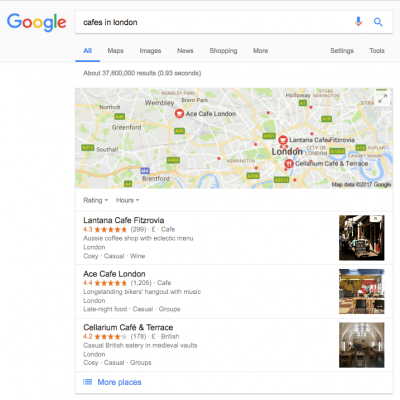The Top Digital Marketing Trends Of 2018
Google never stands still, so neither does digital marketing. Here's what you need to know in 2018.
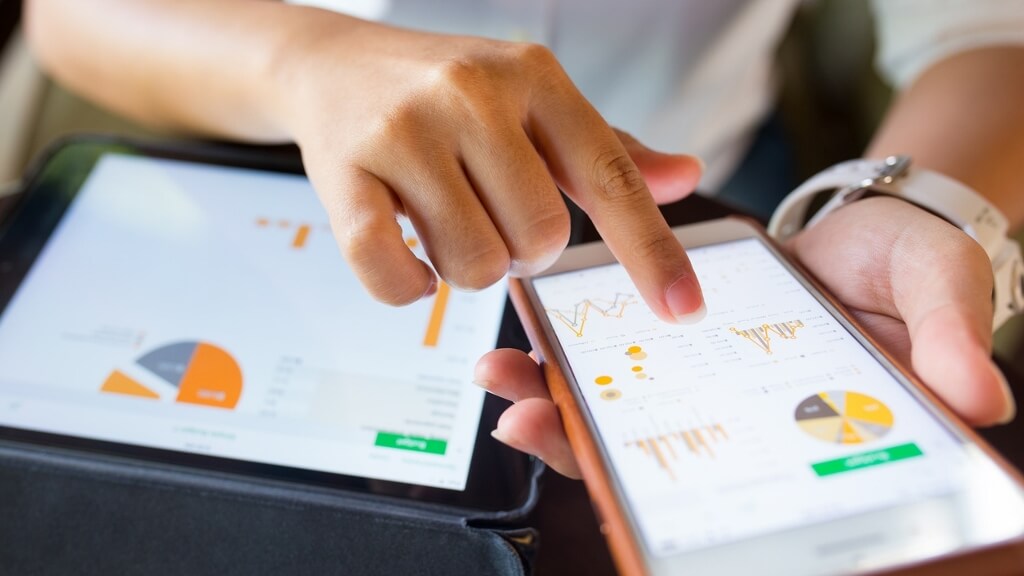
As 2017 enters it's final phase, it's the perfect time to look ahead and predict the Digital Marketing trends of 2018. There are a clear number of industry trends that have exploded onto the scene this year. Trends that are bound to flourish further into 2018.
We divided our Digital Marketing trends of 2018 into three key prediction categories: Social Media, Sales and SEO. These are the three areas you need to keep an eye on in order to stay ahead of the curve. Let looks at what's in store...
1. Social Media
Video Marketing
Video really is the future of content marketing and it's a format that's gained serious momentum in the last 12 months. It shows no signs of slowing down as we move into 2018 and with social media giants like Facebook, Instagram and Twitter investing more energy and money into improving their video capabilities, it's time to ask, why is this? Here's why video is set to be one of the biggest Digital Marketing trends of 2018.
Improved SEO
According to industry experts, "adding a video to your website can increase the chance of a front-page Google result by 53 times". This is definitely something to think about. Check out some great SEO tips for video, they'll help you out!
Higher Engagement
It clear that video has become a major player when it comes to driving engagement. According to the Content Marketing Institute, audiences are around "10 times more likely to engage, embed, share, and comment on video content than blogs or related social posts". This is because video speaks one, universal language, meaning you're able to connect with many audiences right across the globe.
Higher Retention Rates
According to Brainshark, 65% of viewers watch more than ¾ of a video, which is more than we can say about text-based content. Want to get an important message across or convey brand image, then choose video.
Room To Explore
When it comes to social media and video, there are so many different types of video you can experiment with. You can use them to shoot tutorials, perform a recipe, preview programme or movie trailers, show news updates and even tell your brand story.
Social media platforms are really leading the way when it comes to video, take Instagram for example, it has Instagram Live, Boomerangs & Instagram Stories and much more to use for your business to play with - and this is just from one social channel!
Increased Accessibility
While creating a video used to take many months and potentially thousands of pounds, the production of great video content has become much more affordable in the last few years. Nowadays, you can use everything from your iPhone to a high-end DSLR to capture high-quality visuals. Getting in on the video game is for everyone.
Micro-Moments
Another trend being carried over to 2018 is that of micro-moments. These occur when people turn to their devices (increasingly a smartphone) to act on a need to learn something, do something, discover something, watch something, or buy something. They're intent-rich moments. "If 69% of online customers agree that the quality, timing, or relevance of a company's message influences their perception of a brand" (Think With Google) it's worth knowing about micro-moments.
The brands that do the best job of addressing our needs in each moment will win. Here's how you can create the best micro-moments:
- Make a “moments map”
- Understand customer needs in the moment
- Measure every moment that matters
- A/B testing
Geo-Targeting
Sounds fancy right? It's actually just tailored location-based marketing and below are some ways you can use geo-tagging in your digital marketing efforts:
Local Search Ads
Local search ads display only to users in the relevant geographic area. A user inputs a search term with a specific location, such as “cafes in London” and a list of businesses in that vicinity will show up.
You can tailor messages to locals searching for your product or service and increase your visibility and help potential customers find you more easily by setting up a search ad on Google (as well as on other major search engines).
Don’t underestimate the power of a well-placed ad, and the leads that it can generate. Many small businesses remain on the fence when it comes to putting their money into ads. Often it is because when you head into your Google Adwords dash, it can feel overwhelming - unless you know what you are doing. Instead, you could always leave the heavy work to a Google AdWords Consultant.
2. Social Media
On Facebook, unlike most other social networks, you're much more in control of geo-tagging. To 'check in' all you need to do is enable location setting and then add a location to your status. This capability also allows other users to see how many people have checked into a certain place, as well as status updates from other visitors.
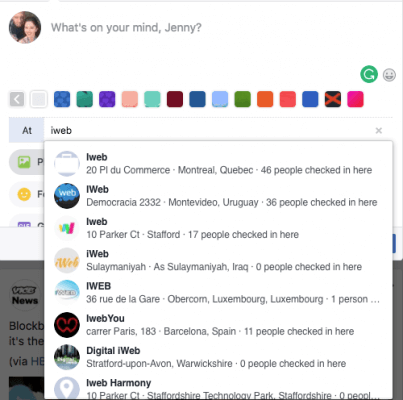
Real-Time Geolocation Marketing
Geolocation marketing lets brands target mobile device users. With geolocation marketing, businesses can reach consumers as soon as their phone’s GPS is nearby. For example, Starbucks offers “Mobile Order and Pay” which allows customers to purchase items and pick them up at their nearest store.
Cross-Technology Location Based Marketing
A great example of this was the phenomenon that was Pokemon Go. As an augmented reality app, it used location data to guide users and provide branded entertainment. Remember those people running all over the place trying to catch Pokemon? We do, it was a big hit!
Influencers
If 2017 was the year of micro-influencers (influencers in a niche field), then 2018 is set to be a year of integration influencing. There will be a growing demand to formulate integrated influencer marketing strategies which will weave together mega-influencers, macro-influencers and micro-influencers as well as merge other well-established word-of-mouth strategies such as loyalty, advocacy and referral programmes.
3. Sales
Chatbots
The chatbot which functions solely with an artificial brain (AKA artificial intelligence)is proving to have an increasingly larger role when it comes to dealing with customers via chat interfaces. They're really set to be one of the biggest Digital Marketing trends of 2018, so watch out, because they're popping up everywhere.
Clothing brands like H&M and makeup retailer Sephora have both used chatbot technology to their benefit. Sephora has used it to offer their customers bespoke and tailored customer interaction, tips, treatment and advice, whereas H&M have offered their users a personal stylist Chatbot. It's clear that Chatbots are creating new and dynamic ways in which brands provide customer service.
Social Proofing
It's easy to see why 'social proofing' is set to be one of the biggest Digital Marketing trends of 2018. Really, it's just a fancy way of describing the sense of collectively affirmed assurance that shoppers feel when they read about positive online experiences in reviews, through testimonials or via social shares.
As a concept, social proofing can really make customers feel much more comfortable about buying from an eCommerce store. Below, online memory retailers MyMemory have utilised the power of reviews by featuring Google Customer Reviews on their site.
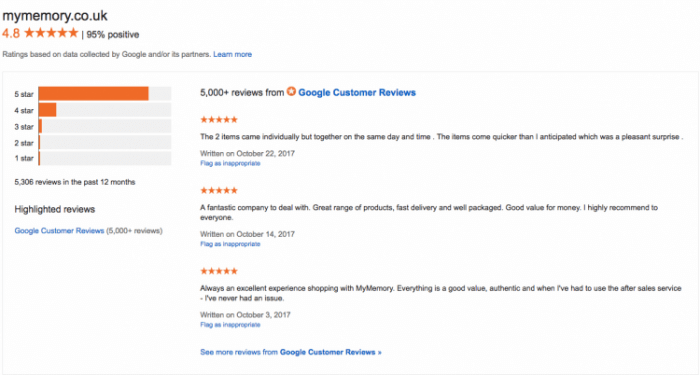
Augmented Reality
Augmented reality is fast growing and indications already suggest that it's going to be one of the big Digital Marketing trends of 2018. Several Apps are already using augmented reality including Pokemon Go and Specsavers.
As a concept, it's set to improve the way businesses and customers communicate with one another, as well as how we engage in marketing. It allows for the creation of a three-dimensional thinking, where users not only see ads ahead of them but also around them.
The latest retailer to launch an AR App has been IKEA. Having experimented with augmented reality as early as 2012, flat-pack furniture giants, IKEA, have come back with a brand new AR App called IKEA Place, which used the Apple ARKit framework.
It's pretty cool. See for yourself on the Appstore.
4. SEO
Voice Search and Digital Assistants
New voice-enabled devices such as the Amazon Alexa and the Google Assistant have been a breakout hit with consumers in 2017 and trending products on Amazon. It's clearly set to grow and expand even more to become one of the biggest Digital Marketing trends of 2018.
Whether we like it or not, voice search affects SEO and incorporating voice command into our websites as well as increasing the amount of quality, conversational style content are imperatives. But what optimisation strategies can we use?
Long Tail Keywords
While it’s unlikely that one word, short tail keywords will ever vanish entirely, but they don’t exactly fit in with the natural, conversational tone used in voice searches. The truth is, we don’t want to feel like we’re talking to machines anymore. We need to focus more attention than ever on personalised, long tail keywords.
Informal Content
If you're writing content in a natural, conversational tone — you’ll be speaking the consumer's language, the language they use in voice search. Since Google doesn’t penalise for voice search, the websites that are seen to adapting to the voice search world are the ones incorporating (voice) search strategies for typers and talkers, alike.
Schema Markup
One of the latest evolutions in SEO, is a new form of optimisation, a semantic vocabulary code used on websites is here to help return more detailed, informative results for users.
For example, if someone searches for a music venue or concert tickets, by applying Schema to the SERP, (Search Engine Results Page) you can instruct the results to show a list of upcoming dates beneath the original search. This helps to promote your own business but also giving the searcher extra, additional information, without having to ask for it.
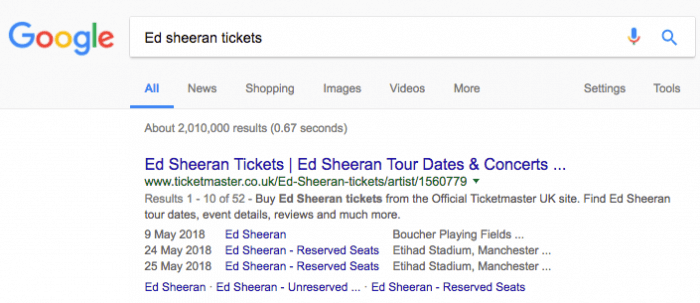
A good web hosting service is also essential, you can check this review of eUKhost.
FAQs
Voice searchers ask questions typically with Who, What, Where, When, Why and How — and they’re looking for quick fixes to their search problems. Have a page for Frequently Asked Questions (FAQs) that begins with each of these adverbs. Then answer them conversationally and informally. This exemplary effort from Bimuno shows just how well FAQ's should be executed.

Personalised UX
"56% are more likely to return to a site that recommends products, using simple customer data such as account details, shopping history and my potential shopping needs". Here's how you can personalise the shopping experience for your customers:
Personalised Products and Product Recommendations
Really, this is just a better version of upselling. Like this example below from Your Design, the automatic, built-in product recommendations helps to generate personalised suggestions for customers based on past purchasing behaviour and present browsing behaviour, combined. This is simple but effective personalisation at it's finest.
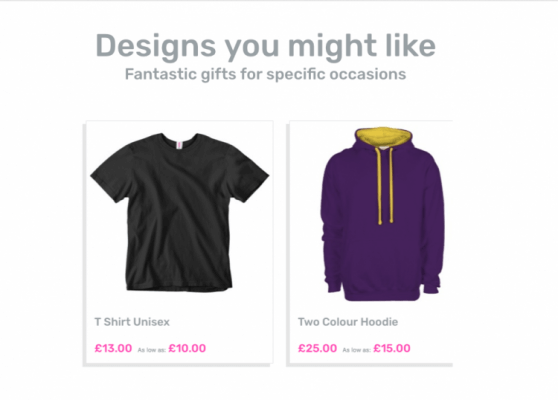
Personalised emails
There's so much to be said for personalised emails hitting the right note with customers. All you really have to do to hit is to include simple email features like 1) customer name greetings, 2) content segmentation, 3) personalised email subject lines, and 4) personal email signature (adds trust and credibility). Below is a good example of personalised emails from Supermarket retailer Sainsbury's:
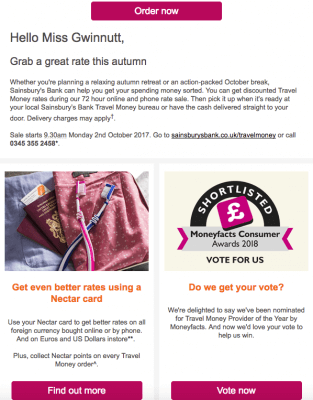
"Did you know that 97% of people who visit an online store for the first time leave without buying anything" Woah that's high! With these stats, it's no wonder that retargeting is a trending marketing topic right now and set to be one of the big Digital Marketing trends of 2018. At the core, it serves advertisements to people that have already engaged with your store, in an attempt to draw them back to your eCommerce store to buy.
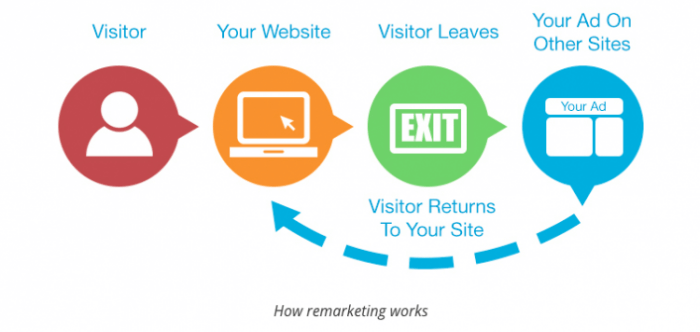
Here is an example of a remarketing campaign from New Look. They've obviously set their remarketing efforts to include basket abandonment status, to help remind it's users to come back and check out.
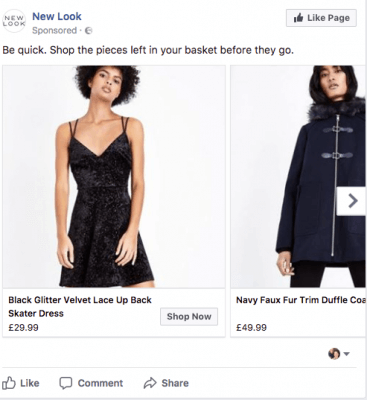
Dynamic Content
Dynamic content is HTML content on your website, forms, landing pages, or emails that changes based on the viewer. As people match the criteria you set for your dynamic content (like an industry, job title, or even a score or grade), a variation of content will display that’s relevant to that viewer.
For example, a national retailer could have their “locations” page only provide the three closest stores to a viewer’s location. A B2B firm, on the other hand, could use dynamic content on their case studies page to highlight the most relevant content based on each viewer’s industry.
Featured Snippets & Quick Answers
Rich snippets or featured snippets really are a hugely popular emerging trend, firmly set to be one of the biggest Digital Marketing trends of 2018! In short, a featured snippet is a summary or an answer to a user query or question that is entered into a search engine. This answer is displayed at the top of Google search results. This result is found because it has been extracted from good on-page content that best responds to the search engine query.
If you're looking to earn a featured snippet, then here's how you can:
Keywords
Use a keyword research tool to find a niche or less popular keywords that are ideal for your site. The Moz Keyword Explorer tool is very handy.
Strategic Content
When it comes to creating your content it’s important to always keep in mind the featured snippet – but equally, ensure your content isn’t repeating the same words or phrases so often that it sounds unnatural – that’s keywords stuffing and Google doesn’t like it.

Consider the viewpoint, tone and approach of the user and produce content that would appeal to you as much as a user.
Tip: A good rule of thumb is to pick a keyword, then write copy adding the keywords in at the end.
QA Formatting
It’s worth devoting a complete landing page to a single question, as well as attempting to incorporate actual FAQ’s or even ”FAQ-style” content onto your pages. With the growing rise of voice search, people are no longer searching for isolated keywords, but in complete sentences.
Slice It Up
Make it easier for Google by slicing up your copy with subheadings, listings and tables. These content strategies form part of a basic understanding of on-page optimisation techniques that are crucial in today’s world.
From an analysis made by STAT, where they analysed one million high-CPC queries for its latest study, "they discovered that 70% of the featured snippets didn’t come from the very first organic result".
Visual Search
Though the tech isn’t new, it’s finding new life in eCommerce websites and mobile apps. Visual search works by comparing the pixels in imagery to identify and return results that are similar. So, instead of typing in a keyword such as ‘black mini dress’ - which will return thousands of general results – users can upload an image to help narrow it down to something much more specific.
Visual search offers an advantage over keyword-matched search. This is because search results are only as good as the searcher’s ability to describe an item.
Capturing the spearfisher
Visual search is a particularly great tool for shoppers who are looking for a specific item – also known as ‘spearfishers’. This is because it reduces the number of steps the user would otherwise have to go through, such as typing in a keyword or scrolling through results. Instead, the desired product is immediately brought to the shopper’s attention.
In turn, visual search could also help to reduce basket abandonment, eliminating the tedious processes that usually frustrate and annoy users.
Cross-selling and inspiration
Another benefit of visual search is that it can be a great cross-selling tool. If a website does not have the desired product in stock, it is able to show similar or related items that might still prompt a purchase.
Moreover, it can also help consumers to imagine how other products might complement it. For instance, someone might search for a red dress, but if they see an image of a woman wearing a red dress and a bag that completes the entire look – they might be inclined to buy more than originally intended.
The Top Digital Marketing Trends Of 2018: Final Thoughts...
This is a round-up of all the items and products that we think are going to hit the and feature as the prominent Digital Marketing trends of 2018. It's not imperative that you incorporate every single trend into your marketing or sales strategy this second, it's all about assessing what works for your business and your customers - trial and error!
Thanks for signing up to Minutehack alerts.
Brilliant editorials heading your way soon.
Okay, Thanks!